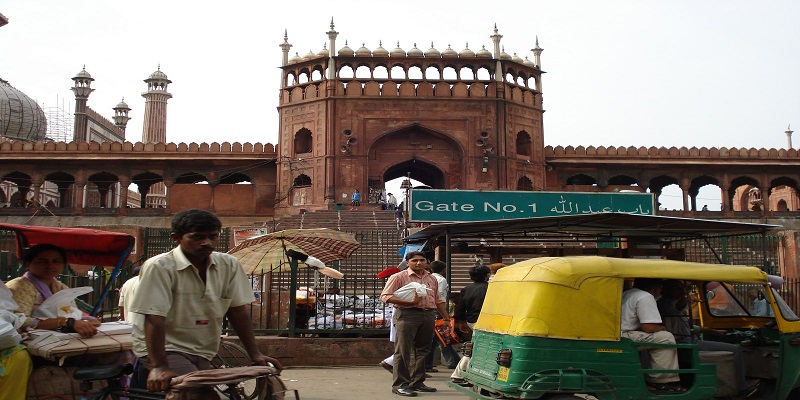Tourist Attraction Places in Delhi
Chandni Chowk

Chandni Chowk
Chandni Chowk - One of the main markets of Delhi, Chandni Chowk was once lined with beautiful fountains. But today the place is very crowded and congested. Chandni Chowk is located opposite the Red Fort. The Area has got the Digamber Jain Temple which houses the Birds hospital. On one end of Chandni Chowk is the Fatehpuri Mosque which was erected by the wives of Shah Jahan. Opposite the old police station or the Kotwali is the Sunheri Masjid from where Nadir Shah ordered his troops to plunder and massacre Delhi.
Old Delhi

Old Delhi
Old Delhi - The City of Shahjahanabad was the capital of Shah Jahan but little remains of that old city. The Old Delhi or the walled city served as the capital for many emperors. Today, remains of the historical city are the gates like - Kashmiri Gate, Ajmeri Gate, Turkman Gate, Delhi gate. Near Delhi Gate is Feroz Shah Kotla, close to this is kept the Ashokan Pillar which was brought from Meerut by Feroz Shah Tughlaq
Jantar Mantar

Jantar Mantar
Jantar Mantar - Few minutes walk from Connaught Place is is a strange collection of solomon coloured structures. These were built by Maharaja Jai Singh and is actually an observatory. Though not as large as its compatriot in Jaipur Jantar Mantar at Delhi also an attraction for the tourists. The astonishing part of these observatories is that they can calculate many astronomical movements very accurately.
Red Fort
Red Fort
Red Fort - Built in Red Sand stone this imposing fort is 3 kms in perimeter with the height of the wall varying from 18 to 30 meters at places. When the Red fort was being built Yamuna used to flow on its one sides and there were deep moats on the other. Today Yamuna flows almost a kilometer away from the fort and the moats have dried up. In the evening the Delhi Tourism organises a light and sound show which narrates the history of Delhi.
Qutab Minar

Qutab Minar
Qutab Minar - In 1199, Qutbuddin raised the Qutab Minar either as a victory tower or as a minaret to the adjacent mosque. From a base of 14.32 mtrs. it tapers to 2.75 mtrs. at a height of 72.5 mtrs. It is still the highest stone tower in India, one of the finest stone tower in India, one of the finest Islamic structures ever raised and Delhi's recognised landmark. It was completed by the Sultan's successor and son-in-law, Iltutmish. The tomb of Iltutmish, which he himself built in 1235, is nearby, Its interiors are profusely decorated with calligraphy, though the dome has collapsed.
Mughul Gardens

Mughul Gardens
Mughul Gardens - The Mughal Garden is located in the premises of the President house. This garden is not opened to public viewing. During the spring seasons of February and March, when the garden is in full bloom people are allowed inside. This garden have some exotic and rare flower plants. The dwarf orange trees and numerous Rose plants are special attraction in the garden. The fountains add to the beauty of the place.
Rose Garden

Rose Garden
Rose Garden - National Rose Garden is situated in the Chanakya Puri area of the capital. This garden has some of the rare and imported rose variety. The best season to visit this garden is during December / January when the flowers are in full bloom.
National Rail Museum

National Rail Museum
National Rail Museum - National Rail Museum is located In Chanakya Puri. It is unique in its collection of rail engines and locomotives. India was among the countries which had railway lines since 19th century. The locomotives in the museums are displayed in open. But they also have a small in house museum which gives the details of the progress and development in the history of railway in India.
National Museum

National Museum - Located on Janpath
National Museum - Located on Janpath, National museum is one of the treasure houses of the our glorious past. The museum has a large collection of excavated items many of which date back to 2nd and 3rd century B.C. The museum has separate section for the Harrapa (Indus valley civilisation) collection.
